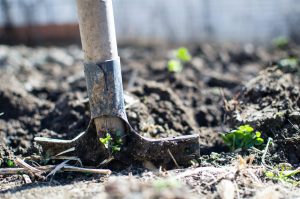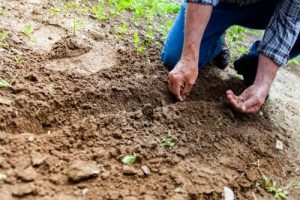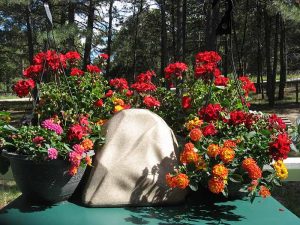 Spring Garden Preparation is a fantastic time of year for outdoor gardening enthusiasts to begin working on preparing garden areas. There is quite possibly nothing more enjoyable then getting your hands dirty and digging into the earth once it defrosts from winters chill. After a long winter of contemplating what you are going to plant and where, it is now time to Spring into action. Spring officially kicks off March 19,20, or 21 every year but you can begin even before that with early spring preparation.
Spring Garden Preparation is a fantastic time of year for outdoor gardening enthusiasts to begin working on preparing garden areas. There is quite possibly nothing more enjoyable then getting your hands dirty and digging into the earth once it defrosts from winters chill. After a long winter of contemplating what you are going to plant and where, it is now time to Spring into action. Spring officially kicks off March 19,20, or 21 every year but you can begin even before that with early spring preparation.
Seasoned gardeners have a step by step clean up routine that they follow year after year but novice gardeners or first time home owners might be a bit lost on what to do to make their green space look a bit more pleasant.
The following steps will help guide you through this process:
Survey the property
Make plans on where you would like to incorporate flower beds or gardens
Clean up debris
Decide upon a care routine
Get planting
HGTV and Better Homes and Gardens also have excellent spring garden preparation checklists.
Survey The Property
Green thumbs and novice gardeners alike will need to survey their property every year during spring garden preparation.. Walk around and check every garden area that once housed plants or flowers. While doing this you are inspecting for signs of nesting animals as well as damage. Depending upon the type of winter there could be retaining walls that need mending, in ground sprinkler systems that need to be replaced or repaired, fencing that is damaged or a slew of other items that may need to be addressed. Keep a list of these green space problems so that you can correct them properly without forgetting about one.
Make Plans On Where You Would Like To Incorporate Flower Beds or Gardens
When you get the itch to add, remove or relocate flower beds the best time to make this decision is in the early Spring months. Take this time to figure out where plants, vegetables and flowers would best be planted. Perhaps your garden did not do so well last year or you simply did not like its location. While surveying your yard keep a piece of paper and a pencil on hand to jot down any ideas on planting plans. When you decide where to incorporate a flower bed or garden you will then be able to take measurements and plan for a garden edge or landscape design. You may also want to sod or seed the area of the previous garden or flower bed.

Laying out a well-designed plan is not as simple as drawing a picture and putting it to action. If you plan on digging you will need to contact a utility company line location company. 811 is the national number to have the land checked for underground wires. Companies send out specialists to check for any underground wires in your yard. The green space will be marked accordingly so you know where you can dig and where you should not dig. You may need to re-adjust any planting plans if there are underground wires located where you planned to plant.
Research your plants and know their growth requirements. You never want to plant full shade or partial shade plants in an area of your yard that is full sun. Keep a running list of the flowers, bushes, vegetables, herbs and other plants you wish to add to your space and organize them by sunlight requirements. You should also keep note of plants that require more or less water. You can utilize watering rocks portable automatic drip irrigation kits and hanging basket portable automatic drip irrigation kits to meet your watering needs for your plants.
Where do you live and what are the seasonal planting norms for your area. There are many free reference tools that provide excellent online tools to research planting zones, times, and recommended plants. With these helpful tools you can begin to generate a list that can be used every year to establish your calender schedule.While it is still cold outside do some research and set up your spring gardening preparation plan.
Clean Up Debris
The biggest hassle during spring landscape clean up is cleaning up of the debris. Make sure you have appropriate gloves and a yard waste receptacle nearby. A lot of leaves may have piled up. A leaf blower, rake and lawn bags will help with this process. If you do not have the time to do a proper landscape clean up then you can hire a local landscape company. Many offer one-time spring clean ups. It is important to not skip this step because you want to give your plants the best flower beds and gardens to grow in.

Have These Tools Handy When Cleaning Up Debris:
Gloves
Rake
Yard Waste Bags
Shovel
Hoe (in the event some debris is mixed with hard soil)
Take the time now in early Spring to think about what new garden tools you might need and inspect what you have. This is the time to sharpen, clean, and maintain your equipment.
During spring garden preparation don’t forget to:
Add amendments to the soil. Check the PH and other nutrients of your soil to see what you may need to add. There are test kits available to test soil attributes. You can also send samples into your area Agricultural Department.
Work any amendments you add into the top 6-12 inches of soil.
Make sure the garden area drains well. While you are turning and loosening the soil try to level and down slope the dirt so the garden area drains well and there is no standing water.
Early spring is also the time to start seeds if you don’t want to purchase plants. Starting seeds indoors is fun and rewarding plus it may save you some money.You need to be careful about lighting, temperature, and soil.
Decide Upon A Care Routine
Before you start planting your gardens you will need to decide upon a care routine. Some plants are more high maintenance than others. Weeds can become invasive. If you do not have a lot of time to tend to these needs then a raised garden box, flower pots or ground cover garden space may be more suited for your needs. Don’t try to tackle everything in one day if you plan on maintaining your green spaces yourself. Set a schedule so you don’t feel overwhelmed. Gardening should be a relaxing and enjoyable hobby, not a chore that you despise. Perhaps weed your garden that yields fruits and vegetables daily but then weed other flower beds on a one a day basis. This will ensure each area receives optimal care without burning out the gardener.

Helpful Garden Tips
1) Don’t over plant. The more you plant, the more you will have to tend to.
2) Plant with a purpose. Plant flowers and vegetation that will be beneficial to both you and the local wildlife. Some gardens can be completely created to nurture butterflies and honeybees.
3) Ask for help if you aren’t sure about certain plants. Garden centers are full of professionals that know what plants work best near each other. If you are not sure what to place in certain areas of your green space then bring a picture of your garden area to the garden center. This will help you make educated planting choices.
Get Planting
Once you have surveyed your property, made plans on where flower beds and gardens will be placed, cleaned up the debris and decided upon your care routine you can then begin planting.

Having a planting calendar will help you decide when and what to plant during your spring garden preparation. Have fun browsing the garden center or seed magazines. Your yard is your exterior blank art canvas. You can make it as colorful and vibrant or neutral and green as you would like. Make sure you meet all water requirements for your plants and have fun incorporating some beautiful garden stones, reflective balls, birdbaths, wind chimes and whimsical characters all throughout your space. Your gardens will be enjoyable and relaxing from spring through fall with proper care. Here is a link to some in depth planting techniques.
We hope this article gives you some basics on Spring planting planning, preparation, and techniques. There is a lot of helpful information and ideas out there and can seem overwhelming. The best thing to do is develop a plan slowly over time and use a journal to document information pertinent to you and your area. As you build your schedule and apply hands on experience the delight of gardening and the beauty of your efforts should be very rewarding.
Enjoy!
JCPJ Enterprises LLC
Maker of Watering Rocks Portable Automatic Irrigation Drip Kits

